How Much Does Software Development Cost in 2025
Software development costs in 2025 are around USD 15,000 to USD 200,000 and more, depending on miscellaneous factors. Software development has become increasingly vibrant as the latest technologies, emerging business requirements, and global talent markets affect them.
From startup MVPs to enterprise-scale solutions, the price tags differ dramatically, influenced by complexity, technology stack, and software development approach. Several components shape the Software development cost in 2025, including project complexity, integrated features, and the expertise of the software development company.
As we are heading forward in time and moving towards 2025, our rapidly evolving tech landscape has introduced new challenges and trends that significantly influence pricing. Hence, understanding these dynamics is essential to budgeting efficiently. Let’s explore these factors to better understand what you’re paying for.
For Any Query: Seek Help From a Top Mobile App Development Company!
What is Software Development?
Software development is the systematic process of designing, developing, testing, and maintaining computer programs, apps, and systems.
It generally involves a structured approach where skilled professionals transform ideas and requirements into functional digital solutions using programming languages, development methodologies, and frameworks.
Software developers examine user needs, design robust software architecture, write code, conduct rigorous testing, and consistently enhance software in order to ensure it meets technical specifications and provides optimal user experience.
Also Read:- How to Create an App?
Software Development Costs in 2025
In 2025, software development costs are invariantly variable and complex, ranging from USD 15,000 to 200,000 and more. Multiple factors like cloud technologies, artificial intelligence integration, and global talent pools significantly affect software development prices.
Software development rates range from USD 15,000 to USD 45,000 for basic apps with minimal features. The advanced software costs more, i.e., USD 20,000 to USD 100,000, whereas highly complex software costs around 100,000 to 200,000 and more, depending on the complexity level requirements needs, and types of features integrated.
Multiple factors like geographical location, technology stack, project complexity, software developer expertise, location of the software development company, etc affect the overall cost of development.
However, emerging markets offer more affordable and budget-friendly rates, whereas specialized technologies like Artificial Intelligence and Machine Learning (AI/ML) and Blockchain command premium pricing models. Additionally, Agile and remote development approaches continue to affect software development cost structures comprehensively.
Also Read:- How Much Does it Cost to Develop an App?
Average Software Development Costs By Software Type and Complexity
Software development costs in 2025 differ widely depending on the type, overall complexity, and specific requirements. Here’s a breakdown of average costs and price ranges for diverse software development categories in 2025:
1. Android App Development
The cost of Android app development typically ranges from USD 15,000 to USD 150,000 based on the features integrated and the complexity level of the application.
Simple apps with basic functionality cost around USD 15,000 to USD 45,000, whereas highly complex apps with advanced features may cost you USD 45,000 to USD 150,000, depending on complex integrations, various features, complexity level, and custom designs included.
Various factors like back-end infrastructure, third-party integrations, and real-time features significantly affect the overall software development costs.
2. iOS App Development
The cost of iOS application development is around USD 15,000 to USD 200,000.
Apple’s strict guidelines and design necessities usually make iOS development slightly more expensive than Android app development.
Simple applications with basic functionalities start around USD 12,000 to USD 50,000, whereas highly complex and feature-rich applications with robust UI/UX designs, complex back-end, and multiple integrations can cost you USD 40,000 to 200,000.
3. Web App Development
Web application development costs fluctuate between USD 15,000 and USD 180,000.
Simple and informative web apps may cost you USD 15,000 to USD 35,000 whereas complex and interactive web apps can reach over USD 100,000, depending on diverse factors, including complex functionality, multiple integrations, and custom designs.
Various factors like server-side complexity, responsive design, security requirements, scalability, and database integrations affect the overall software development costs in 2025.
4. Enterprise Software
Enterprise software development normally represents the most expensive and complex category, ranging from USD 15,000 to USD 250,000.
These comprehensive solutions require exhaustive customization, high-security protocols, multiple integrations, and complex back-end systems.
Enterprise software development costs depend on organizational size, integration complexity, scalability, required features, and compliance needs. Large-scale enterprise solutions generally involve diverse software development teams and long-term implementation.
5. Custom Solutions
Custom software solutions offer customized approaches for specific business necessities, with costs ranging from USD 23,000 to USD 100,000.
The software development price completely depends on unique necessities, required integrations, specialized functionality, and complexity of business logic.
Multiple factors like industry-specific regulations, user experience design, scalability, and data processing requirements significantly affect software development costs and overall investment in 2025.
Software Development Cost Breakdown For 2025
Software development costs in 2025 represent a complex ecosystem of strategic investments, precise resource allocation, and technological innovations across diverse project stages. Below is the comprehensive software development cost breakdown for 2025:
1. Planning and Requirement Analysis
The initial phase of software development involves comprehensive project scoping, comprehensive requirement gathering, and stakeholder interviews.
It generally consumes 10% to 15% of the total project budget, establishes project foundations, demonstrates technical specifications, identifies potential challenges, and creates a roadmap for successful software development and implementation.
2. Design and Prototyping
The design and prototyping stages emphasize developing visual representations and preliminary software models.
This phase represents approximately 15% to 20% of project costs, including user interface design, wireframing, user experience optimization, visual design components, and interactive prototypes that establish the software’s aesthetics and functional blueprint.
For Query:- Hire a UI Designer!
3. Development and Testing
Software development testing constitutes the most resource-intensive stage and consumes 40% to 50% of the total project budget.
This phase involves actual code writing, integrating systems, implementing features, debugging, comprehensive testing, performance optimization, and ensuring the software meets pre-defined technical and functional necessities.
4. Deployment and Maintenance
Deployment and ongoing maintenance represent 10% to 15% of the overall software development cost in 2025
This includes initial configuration, final software launch, continuous monitoring, user training, bug fixes, performance tuning, security updates, and enforcing incremental enhancements, depending on user feedback and emerging technological trends.
Factors Affecting the Software Development Cost in 2025
Software development costs in 2025 are affected by a complex interplay of technological, market, and organizational dynamics that shape investment strategies. Below are the essential factors that influence the overall pricing of software development:
1. Technology Stack and Complexity
The selected technology stack substantially affects the software development costs. Advanced technologies like AI/ML, IoT, Blockchain, cloud integration, etc require specialized skills and increasing expenses.
Complex architectures, advanced frameworks, and multiple integrations demand higher investments and more complex software development approaches.
2. Development Team Composition
Software development team expertise, skill levels, and geographic location dramatically affect the overall pricing structure.
When you hire developers, specialized experts, and professionals with niche technological skills typically increases expenses. Nearshore, offshore, and onshore teams offer different pricing models and skill sets.
3. Project Scope and Requirements
Project complexity, feature richness, and specific necessities directly influence the overall software development costs.
Comprehensive and multi-functional software with robust features, numerous integrations, and complex business logic requires more time, specialized expertise, and resources, significantly increasing the overall price.
4. Development Methodology
Selected software development methodologies like Agile, Waterfall, or Hybrid models highly impact cost structures.
Agile approaches offer flexibility but might increase iterations, whereas Waterfall provides more predictable cost estimations. Hybrid models balance adaptability and structured planning, influencing resource allocation.
5. Integration and Scalability
Software integration complexity and scalability requirements significantly impact the overall software development cost in 2025.
Developing systems that seamlessly integrate with existing infrastructure, support considerable platforms, and accommodate future growth demands additional investment in architectural design and technical implementation.
6. Compliance and Security
Industry-specific regulatory complexity and scalability necessities substantially affect the overall development costs.
Developing systems that seamlessly integrate with existing infrastructure, accommodate future growth demands, and support diverse platforms in architectural design and technical implementation.
7. Market and Technological Trends
Emerging technological trends, market dynamics, and rapid digital transformation influence software development costs.
Adapting to AI, machine learning, cloud technologies, and evolving user expectations necessitates continuous skill updates and innovative development approaches.
Trends Impacting Software Development Costs in 2025
The software development landscape in 2025 is rapidly emerging, driven by technological advancements, transformative digital strategies, and market demands that reshape investment approaches. The most crucial trends that affect the overall software development costs are as follows:
1. Rise of AI and Automation Tools
AI, ML, and automation tools are revolutionizing software development that potentially reduces costs by 20% to 30%. Implementation expenses range from USD 35,000 to USD 200,000, with AI-powered development platforms that reduce development time and increase efficiency.
These tools automate repetitive tasks, optimize resource allocation, and improve code quality across project lifecycles.
2. Increased Use of Cloud Infrastructure
Cloud infrastructure adoption continues to transform software development economics. The cost savings range from 20% to 50% compared to traditional infrastructures.
Cloud services like AWS, Google Cloud, and Azure offer scalable solutions, with monthly expenses between USD 500 to USD 5,000 depending on the level of complexity. Reduced hardware costs and enhanced flexibility drive widespread adoption of cloud infrastructure.
3. Focus on Cybersecurity
Cybersecurity investments are becoming critical, with costs ranging from $50,000-$300,000 annually. Enhanced security measures add 10-20% to development budgets but are essential for protecting digital assets.
Advanced threat detection, encryption technologies, and comprehensive security frameworks are now integral to software development strategies.
How to Calculate Your Software Development Cost?
Developing accurate software development cost estimates requires a systematic, comprehensive approach that considers multiple variables and potential complexities. In order to calculate your software development cost-efficiently, you need to follow the below steps carefully:
1. Comprehensive Project Vision Mapping
Meticulously define project objectives, functional requirements, and desired outcomes.
Conduct thorough stakeholder consultations, document detailed specifications, and create a clear, comprehensive project vision that serves as a foundational blueprint for accurate cost estimation.
2. Strategic Project Decomposition
Break the project into granular, manageable phases and sub-tasks. Divide complex requirements into smaller, measurable components.
This approach enables more precise time and resource estimation, facilitates better tracking, and provides a structured framework for development.
3. Precise Task Duration Calculation
Estimate realistic time requirements for each project task, considering the complexity, developer expertise, and potential challenges.
Use historical data, expert insights, and sophisticated estimation techniques to develop accurate time projections that inform overall cost calculations.
4. Comprehensive Rate Determination
Calculate hourly rates based on developer expertise, geographical location, technology stack, and market standards.
Consider variations in junior, mid-level, and senior developer rates. Factor in specialized skill premiums for advanced technological requirements.
5. Holistic Cost Incorporation
Include comprehensive cost considerations beyond direct development expenses.
Factor in software licenses, cloud infrastructure, third-party integration costs, design assets, testing tools, and potential external consultation expenses to develop a more accurate investment projection.
6. Proactive Maintenance Planning
Anticipate and budget for ongoing maintenance, support, and potential future enhancements.
Estimate long-term costs for software updates, security patches, performance optimization, and adaptation to emerging technological trends and market requirements.
7. Risk Mitigation Budgeting
Implement a contingency budget ranging from 10-20% to address unexpected challenges, potential scope changes, and unforeseen technical complexities.
This buffer provides financial flexibility and risk mitigation throughout the development process.
8. Advanced Estimation Technologies
Leverage sophisticated estimation tools and software that utilize machine learning, historical data analysis, and predictive modeling.
These technologies offer more accurate, data-driven cost projections by analyzing complex development variables.
Tips to Reduce Software Development Cost in 2025
Navigating software development costs in 2025 requires strategic planning, savvy resource management, and an ingenious approach in the quickly emerging technological landscape. Below are the tips to help you reduce software development costs efficiently:
1. Prioritize Minimum Viable Product (MVP)
Start with a lean MVP methodology by focusing on core functionalities, reducing initial costs by 30% to 40%, and enabling incremental feature additions.
Validate market demand, reduce unnecessary expenditures, and seek user feedback by integrating crucial features that provide immediate value.
2. Leverage Open-Source Technologies
Utilize open-source frameworks and libraries to significantly reduce development costs. These technologies can cut expenses by 20% to 30%, providing robust, pre-tested solutions.
Explore frameworks like React, Angular, and Node.js, which offer cost-effective alternatives to proprietary technologies while maintaining high-quality development standards.
3. Optimize Team Structure
Enforce a hybrid development model incorporating onshore and offshore talent. This methodology can reduce labor costs by 40% to 50% while maintaining top-quality standards.
Select your team members carefully, balance expertise with cost-effectiveness, and build a collaborative environment that maximizes productivity and reduces unnecessary expenses.
4. Implement Agile Methodologies
Adopt Agile development methodologies in order to enrich flexibility and cost-efficiency. These approaches reduce software development time by 20% to 30%, allowing for quick iterations and more responsive development cycles.
Break projects into smaller, manageable sprints, continuously adapt to changing necessities and reduce resource wastage.
5. Invest in Automation and DevOps
Integrate automation tools and DevOps practices to streamline development processes. This strategy can reduce operational costs by 25% to 35%, improving efficiency and reducing manual intervention.
Implement continuous integration, automated testing, and deployment pipelines to minimize errors and accelerate time-to-market.
6. Comprehensive Requirements Analysis
Conduct a thorough initial requirements analysis to prevent costly changes later. Invest time in detailed project scoping, potentially saving 30% to 40% on potential rework.
Engage stakeholders, document comprehensive requirements, and create a clear project roadmap to minimize misunderstandings and subsequent expensive modifications.
7. Strategic Technology Selection
Select technologies that balance performance, scalability, and cost-effectiveness. Evaluate long-term maintenance expenses, ecosystem support, and potential future adaptability.
Select frameworks and technologies that offer an optimal return on investment, considering both initial development and ongoing maintenance costs.
Software Development Market Overview & Statistics
The global software development market in 2025 is projected to reach USD 1.2 trillion, with a compound annual growth rate of 11.5%.
As per RadixWeb, 84.7% of software development projects are based on enterprise applications whereas 53.6% of software development projects are based on business automation, and 38.50% are simply eCommerce software development projects. They also predicted the software market to reach $1039 million by 2027 with a CAGR of $22.54% from 2020 to 2027.
Cloud computing, AI integration, and digital transformation drive market expansion. Emerging technologies like blockchain and machine learning continue to reshape development strategies, with increasing demand for specialized skills and innovative solutions.
How Mobulous Is Your Best Choice For Software Development Within Your Budget?
We offer transparent, flexible software development solutions tailored to your unique business needs. Our expert team combines cutting-edge technologies with cost-effective strategies, delivering high-quality software within your budget.
We prioritize value, efficiency, and innovation, ensuring optimal return on investment through customized approaches, rigorous quality control, and comprehensive support throughout your project lifecycle.
Wrapping Up
Software development costs in 2025 are influenced by project scope, expertise, team, location, and evolving technologies. Careful planning, clear communication, and selecting the right pricing model can help optimize your budget while ensuring quality outcomes.
By understanding regional cost differences and leveraging trends like AI and cloud infrastructure, businesses can make informed decisions.
Prioritize post-launch support and scalability to future-proof your software investment, ensuring it remains efficient, secure, and aligned with your business goals.
FAQs — Software Development Cost in 2025
Q. What is Software development?
Ans. Software development is a systematic process of designing, creating, testing, and maintaining computer programs, applications, and systems. It involves transforming ideas into functional digital solutions using programming languages, frameworks, and methodologies to meet specific user and business requirements.
Q. Is there free AI software?
Ans. Yes, several free AI software options exist, including TensorFlow, PyTorch, Scikit-learn, and Hugging Face’s open-source models. These platforms offer free tools for machine learning, natural language processing, and AI development, enabling developers and researchers to explore and implement AI technologies.
Q. How much does AI software development cost?
Ans. AI software development costs range from $20,000 to $200,000, depending on complexity, features, and required expertise. Simple AI applications start around $50,000, while advanced, enterprise-level AI solutions with complex machine learning models can exceed $100,000 to $200,000.
Q. What is the software development cost in 2025?
Ans. In 2025, software development costs vary widely from $20,000 for simple apps to $150,000+ for enterprise solutions. Factors like technology stack, complexity, team expertise, and project requirements significantly influence pricing across different software development categories.

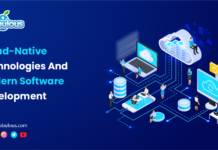


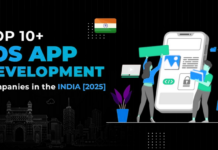
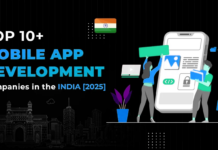




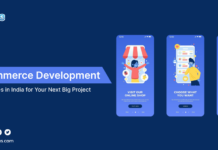







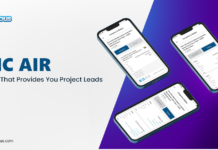


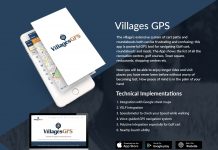

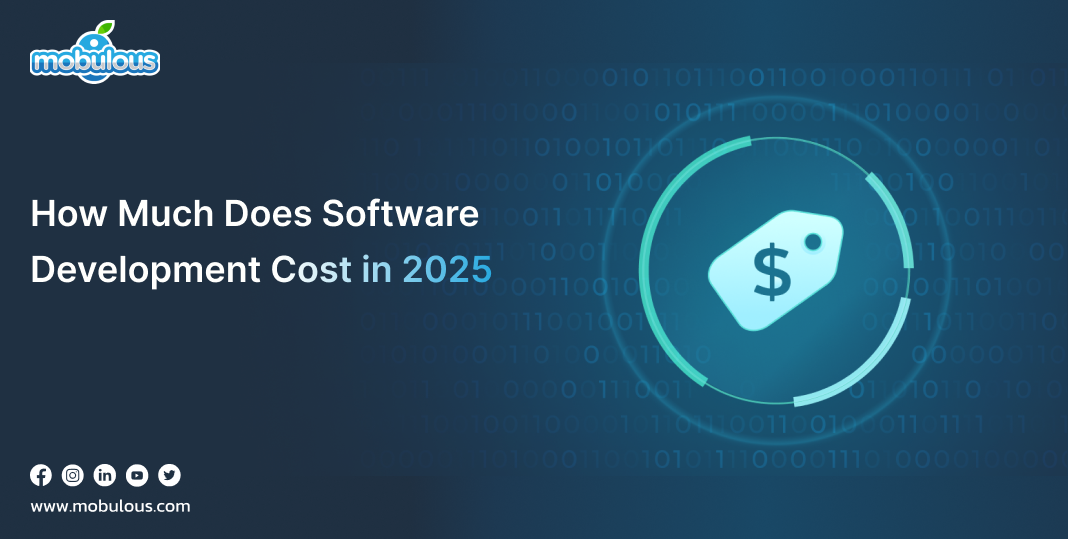



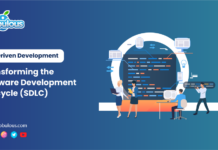




![Blockchain in Gaming Industry – Potential, Limitations & Real-Life Examples [2023] Blockchain in Gaming – Potential, Limitations, and Real-Life Illustrations](https://www.mobulous.com/blog/wp-content/uploads/Blockchain-in-Gaming-Potential-Limitations-and-Real-Life-Illustrations-324x160.png)